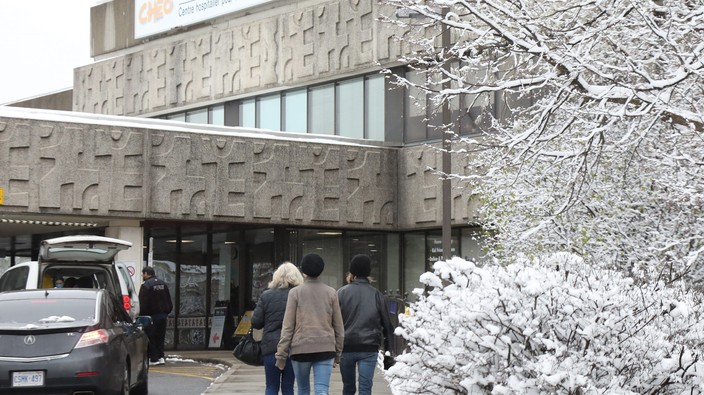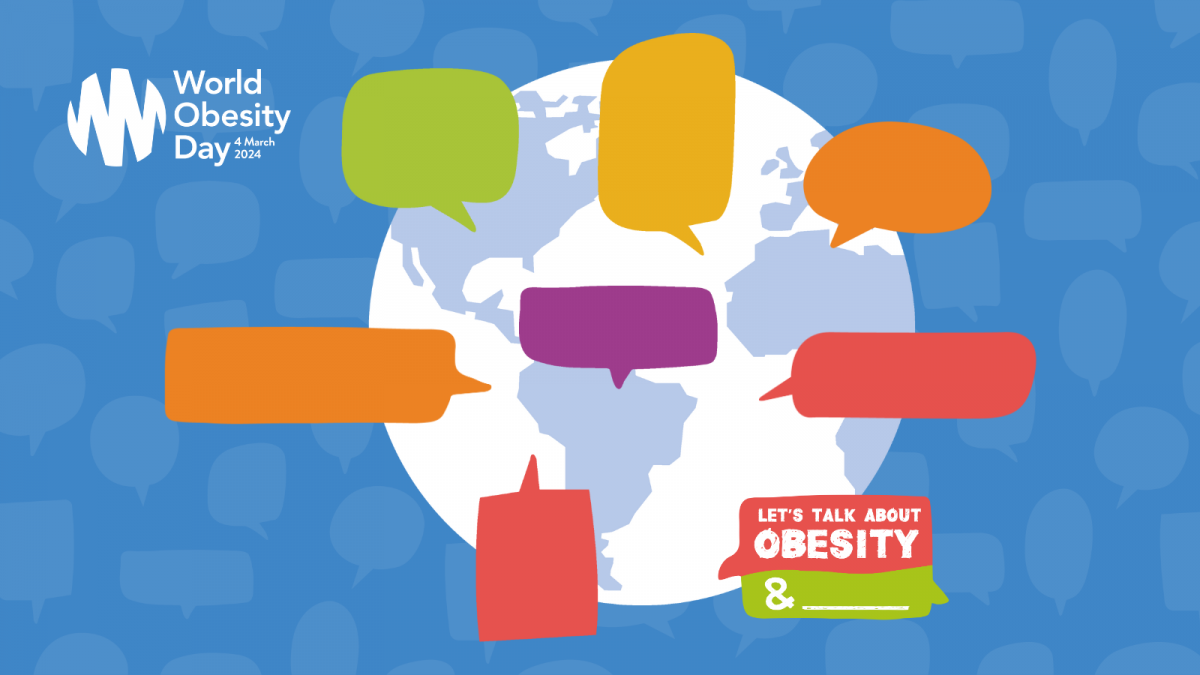obesity matters wellness workshop: embracing wellness beyond the scale
the wellness workshops and support sessions are designed to give people confidence and empower them so they can start their own path to better health.
nov 05, 2024
obesity matters launches french division to support and advocate for people in quebec
"parlons obésité, is about empowering french canadians to advocate for their rights"
oct 23, 2024
understanding the childhood obesity epidemic: environment, genetics and education
the entire society has to work together to end childhood obesity, and the onus cannot be put on parents or just one group of people.
sep 18, 2024
the toll of obesity: long-term impact, access to care and insurance support
“people living with obesity have a right to tackle their disease, to be treated just like someone who has migraines or hypertension. it’s just basic human rights."
sep 06, 2024
understanding the childhood obesity epidemic: environment, genetics and education
the entire society has to work together to end childhood obesity, and the onus cannot be put on parents or just one group of people.
sep 18, 2024
the toll of obesity: long-term impact, access to care and insurance support
“people living with obesity have a right to tackle their disease, to be treated just like someone who has migraines or hypertension. it’s just basic human rights."
sep 06, 2024
leaders in health: dr. sean wharton and compassion in obesity medicine
while the mantra “eat less and move more” continues to be advised by some healthcare practitioners for people living with obesity, dr. sean wharton has brought greater compassion and understanding to the healthcare community and his own clinic.
aug 21, 2024
world obesity day 2024: 'my hope is that we can drop the judgment and look for solutions’
five advocates shared their thoughts on what they felt was the most important issue facing the obesity community.
mar 04, 2024
leaders in health: dr. sean wharton and compassion in obesity medicine
while the mantra “eat less and move more” continues to be advised by some healthcare practitioners for people living with obesity, dr. sean wharton has brought greater compassion and understanding to the healthcare community and his own clinic.
aug 21, 2024
world obesity day 2024: 'my hope is that we can drop the judgment and look for solutions’
five advocates shared their thoughts on what they felt was the most important issue facing the obesity community.
mar 04, 2024
obesity matters policy roundtable: breaking barriers to obesity treatment and acceptance
tackling stigma in the media, educating health care providers and lobbying policymakers are just a few of the challenges that this national advocacy organization is taking on.
nov 14, 2023
unlock a healthier way of eating: the flexitarian diet
among the many health benefits provided by a flexitarian diet, a lowered risk of chronic disease is perhaps the most notable.
sep 20, 2023
obesity matters policy roundtable: breaking barriers to obesity treatment and acceptance
tackling stigma in the media, educating health care providers and lobbying policymakers are just a few of the challenges that this national advocacy organization is taking on.
nov 14, 2023
unlock a healthier way of eating: the flexitarian diet
among the many health benefits provided by a flexitarian diet, a lowered risk of chronic disease is perhaps the most notable.
sep 20, 2023
obesity 'in your own words' book aims to raise awareness and spark compassion
eight extraordinary canadians bravely shared pieces of their life with obesity in the form of letters to their younger selves, and despite stigma, discrimination and hurtful stereotypes, these are stories of hope, resilience and recovery.
mar 17, 2023
food addiction is not about willpower, says recovering food addict dr. vera tarman
if you think about food all the time, behave in embarrassing ways around food and don’t want people to see how you eat, you may be a food addict, says dr. tarman.
mar 14, 2023
obesity 'in your own words' book aims to raise awareness and spark compassion
eight extraordinary canadians bravely shared pieces of their life with obesity in the form of letters to their younger selves, and despite stigma, discrimination and hurtful stereotypes, these are stories of hope, resilience and recovery.
mar 17, 2023
food addiction is not about willpower, says recovering food addict dr. vera tarman
if you think about food all the time, behave in embarrassing ways around food and don’t want people to see how you eat, you may be a food addict, says dr. tarman.
mar 14, 2023
weight loss isn't just about eating less and moving more
dietitian and weight loss coach tedi nikova uses a combination of cognitive behavioural therapy, acceptance therapy and commitment therapy to help clients overcome unhealthy relationships with food.
mar 13, 2023
obesity treatment: 'stop talking to patients like they are children'
dr. sean wharton is working towards changing how we understand obesity, from how doctors treat patients to society's perspectives: "african-american women carry their weight on their hips and thighs. yet, they’re demonized when they should just be called beautiful."
mar 10, 2023
weight loss isn't just about eating less and moving more
dietitian and weight loss coach tedi nikova uses a combination of cognitive behavioural therapy, acceptance therapy and commitment therapy to help clients overcome unhealthy relationships with food.
mar 13, 2023
obesity treatment: 'stop talking to patients like they are children'
dr. sean wharton is working towards changing how we understand obesity, from how doctors treat patients to society's perspectives: "african-american women carry their weight on their hips and thighs. yet, they’re demonized when they should just be called beautiful."
mar 10, 2023
happiness doesn't depend on your weight, says gillian mandich, happiness expert
social connection determines happiness more than money, gender, race, where we live, education, and even the number on the scale.
mar 09, 2023
obesity matters imagines acceptance and equity in care on world obesity day
in just a few short years, obesity matters has united individuals, families, communities, and organizations to create awareness around obesity as a chronic condition, but there's more work to be done.
mar 02, 2023
happiness doesn't depend on your weight, says gillian mandich, happiness expert
social connection determines happiness more than money, gender, race, where we live, education, and even the number on the scale.
mar 09, 2023
obesity matters imagines acceptance and equity in care on world obesity day
in just a few short years, obesity matters has united individuals, families, communities, and organizations to create awareness around obesity as a chronic condition, but there's more work to be done.
mar 02, 2023
living with obesity: 'i know what it feels like for someone to assume you are lesser than you are because you have a couple of extra kilos'
aashni shah has a message for others who are living with obesity: "stop looking at the number on the scale, find the things that inspire you, and start focusing on what you want your life to look like."
sep 21, 2022
five myths about obesity
obesity is a complex disease, and a lack of proper information can lead to the formation of some potentially harmful myths.
may 19, 2022
 3 minute read
3 minute read


















